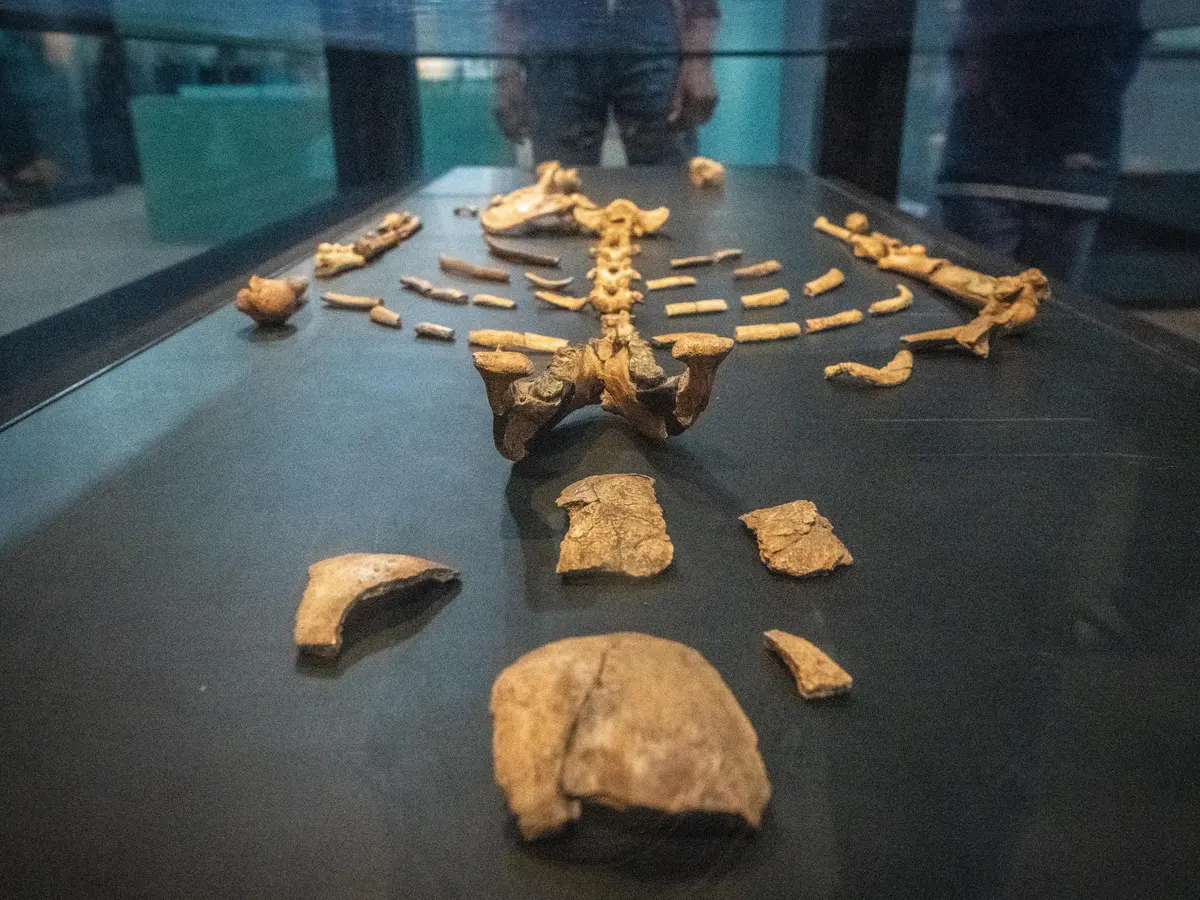In 1974, the fossilised bones of Lucy, a 3.2 million-year-old hominin, were discovered in Ethiopia. How has this remarkable skeleton disproved Darwinian theory – and what links her to the Beatles?
On 24 November 1974, the US anthropologist Donald Johanson was scrabbling through a ravine at Hadar in the Afar region of Ethiopia with his research student, Tom Gray. The pair were looking for fossilised animal bones in the surrounding silt and ash when Johanson spotted a tiny fragment of arm bone – and realised it belonged to a human-like creature.
“We looked up the slope,” Johanson later recalled. “There, incredibly, lay a multitude of bone fragments – a nearly complete lower jaw, a thighbone, ribs, vertebrae, and more! Tom and I yelled, hugged each other, and danced, mad as any Englishman in the midday sun!”
Johanson and Gray drove back to their camp in jubilation, their Land Rover horn blaring. Beer was cooled in the Awash river and barbecued goat was served to celebrate their discovery – which, by any account, was a sensational one. A total of 47 bones from a single, ancient hominin (the term used to define humans and all our extinct bipedal relatives) were ultimately uncovered by Johanson and Gray at the site.
The fragments they collected amounted to about 40% of a complete skeleton, and subsequent dating has shown that these remains are around 3.2m years old. At the time, it was the oldest human-like being that had ever been unearthed by fossil hunters, and she was given the name Lucy.
Fifty years on, Johanson and Gray’s discovery remains one of the most notable breakthroughs ever made in the field of human palaeontology. From the pelvis, scientists concluded it belonged to a female, while her short legs suggested she had only been about four foot tall. This discovery was followed up with other, similar finds, some in Ethiopia and some in Tanzania, and in 1978, Johanson – working with a colleague, Tim White – announced that these bones, including Lucy’s, had all come from a single, previously unknown hominin species which they named Australopithecus afarensis: the Southern Ape from Afar.



No Comment Found.